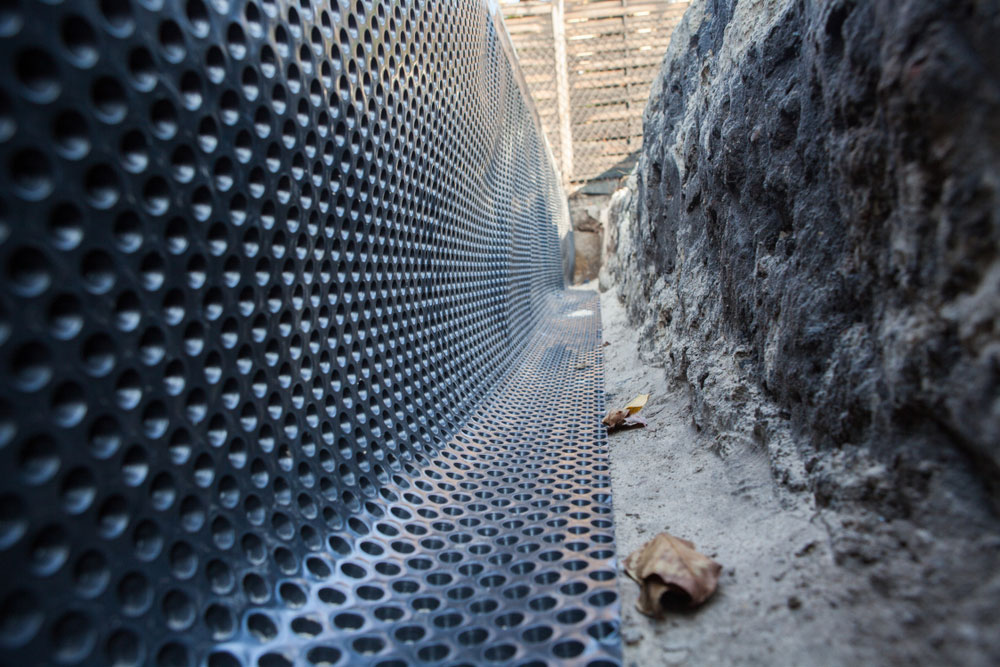A solid foundation is essential for any home’s long-term health and stability. However, in Canada’s diverse climate, where heavy rainfall, snowmelt, and freezing temperatures are common, foundations are constantly at risk of water intrusion.
Over time, water damage can compromise structural integrity, lead to mould growth, and drastically reduce property value. Foundation waterproofing is a critical preventative measure that protects your home from these issues.
Whether you’re building a new house or addressing concerns in an existing one, understanding how foundation waterproofing works can help you make informed, cost-effective decisions.
What Is Foundation Waterproofing?
Foundation waterproofing refers to the combination of materials, techniques, and systems to prevent water from penetrating a building’s foundation. It differs from damp-proofing in actively resisting water intrusion even under pressure.
- Involves sealing and drainage systems: Waterproofing typically includes applying a protective membrane to the foundation exterior and installing systems to divert water from the home.
- Targets groundwater and surface water: The goal is to protect against water from both below and above ground level, especially during storms or seasonal thaws.
- It applies to both new and existing homes. While easier to install during construction, foundation waterproofing can also be retrofitted to older properties.
A fully waterproofed foundation is essential for maintaining a dry basement and avoiding costly structural issues.
Key Components of Foundation Waterproofing
A successful foundation waterproofing system relies on multiple layers and strategies to keep moisture at bay.
- Exterior waterproof membranes are rubberised coatings or sheet membranes applied outside the foundation walls to block water intrusion.
- Drainage boards or panels: Installed against the foundation wall, these panels direct water down to a perimeter drain and help protect the membrane.
- Perimeter footing drains (weeping tiles): Perforated pipes installed around the base of the foundation collect groundwater and redirect it safely away from the home.
- Gravel backfill and proper grading: Using gravel instead of soil allows water to flow more freely into the drainage system, and sloped grading moves surface water away from the structure.
Each component works together to create a comprehensive barrier against water infiltration.
Benefits of Foundation Waterproofing
Investing in foundation waterproofing provides both immediate and long-term benefits for homeowners.
- Prevents water damage and mould: By keeping the foundation dry, you reduce the risk of mould growth, wood rot, and other moisture-related issues.
- Preserves structural integrity: Waterproofing helps maintain the strength of concrete and masonry, preventing cracks, shifting, or erosion over time.
- Improves indoor air quality: A dry foundation reduces basement humidity and minimizes airborne contaminants caused by dampness.
- Increases home value: Buyers are more likely to invest in homes with dry, well-maintained foundations, especially in wet or flood-prone regions.
These advantages make foundation waterproofing an innovative and proactive investment for Canadian homeowners.
Common Signs You May Need Waterproofing
Knowing when to waterproof your foundation can prevent minor issues from becoming expensive repairs.
- Cracks in foundation walls or floors may allow water to seep through, especially during wet seasons or freeze-thaw cycles.
- Efflorescence or white streaks: Mineral deposits left behind by evaporating water strongly indicate seepage.
- Musty smells or visible damp spots in the basement often point to moisture entering through the foundation and settling in enclosed spaces.
- Pooled water near your home’s foundation: Poor grading or clogged downspouts can lead to standing water, increasing hydrostatic pressure on foundation walls.
If you notice any warning signs, consulting a waterproofing professional is strongly recommended.
Professional Installation and Long-Term Maintenance
Proper installation and ongoing maintenance are key to ensuring your waterproofing system remains effective.
- Hire licensed and experienced contractors. These professionals understand local soil conditions, building codes, and the best materials for long-term performance.
- Inspect and clean drainage systems regularly: Weeping tiles, sump pumps, and gutters should be maintained to keep water from your foundation.
- Reapply membranes when needed: Over time, waterproof coatings may wear down or get damaged, requiring touch-ups or replacement.
- Check for landscape changes: New garden beds or patios can inadvertently alter water flow, so ensure new projects don’t compromise your drainage system.
With professional help and regular upkeep, your waterproofing solution can protect your home for decades.
Foundation waterproofing is more than just a protective measure—it’s a long-term investment in your home’s safety, comfort, and value. With Canada’s unpredictable weather and soil conditions, homes are especially vulnerable to water-related damage.
By understanding how foundation waterproofing works and recognising the early warning signs of moisture intrusion, homeowners can take proactive steps to safeguard their property. Whether building new or upgrading an existing home, professional foundation waterproofing provides peace of mind and lasting protection against nature’s harshest elements.

